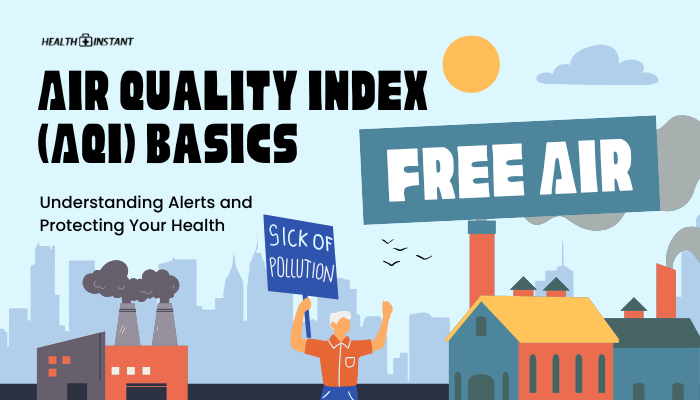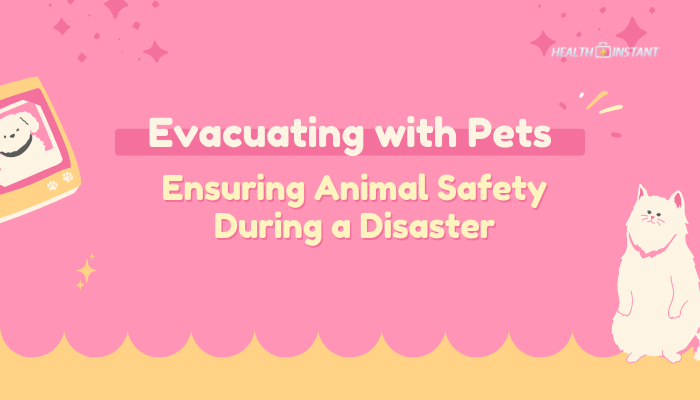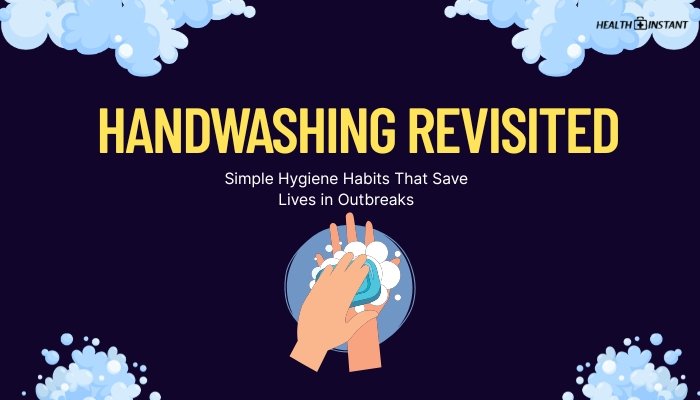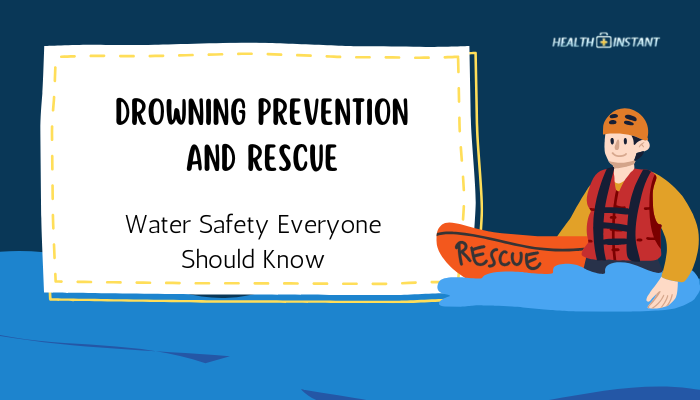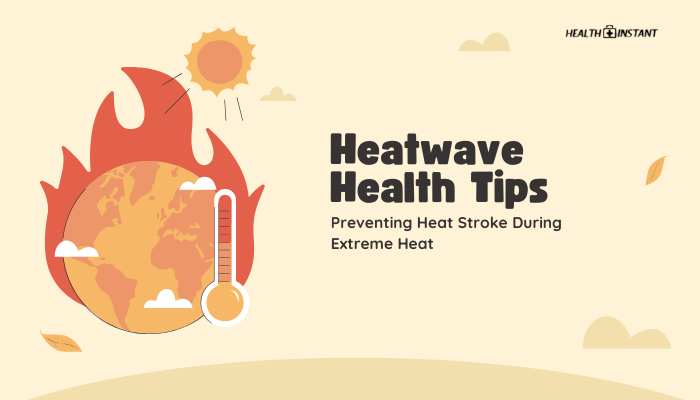Introduction
Air pollution is a persistent public health concern in many regions. The Air Quality Index (AQI) offers a simple way to interpret levels of pollutants and understand what these levels mean for your health. By monitoring AQI values, you can make decisions that minimize harmful exposure.
This article explains how the AQI is calculated, the significance of alerts, which groups face higher risk, and the practical steps you can take to reduce negative health effects.
What Is the Air Quality Index (AQI)?
The AQI is a scale that translates measured pollutant concentrations into a number ranging from zero to several hundred. Higher AQI values signify greater pollution and potential risk. Each country may adapt the AQI with specific breakpoints, but the concept remains consistent: a higher AQI value indicates more severe air pollution.
Government agencies and health organizations encourage the public to follow AQI updates on official websites or mobile applications.
Key Points About the AQI
- Unified Scale: The AQI condenses multiple pollutants into a single, easy-to-read figure.
- Color Coding: Many AQI charts assign colors to ranges of AQI values. These colors help people immediately recognize pollution levels: Green for good air quality and deeper shades for increasingly poor conditions.
- Health Guidance: AQI readings typically include health guidance for individuals, especially for those in sensitive groups.
Common Air Pollutants in AQI Calculations
The AQI generally tracks a set of major pollutants. The exact list can vary, but several pollutants appear frequently:
- Particulate Matter (PM2.5 and PM10)
- PM2.5 particles measure less than 2.5 micrometers in diameter. They penetrate deeply into the respiratory tract.
- PM10 particles measure less than 10 micrometers in diameter. They can irritate the nose and throat.
- PM2.5 particles measure less than 2.5 micrometers in diameter. They penetrate deeply into the respiratory tract.
- Ozone (O₃)
- Ground-level ozone is formed by chemical reactions between nitrogen oxides and volatile organic compounds in sunlight.
- High ozone levels can irritate airways and worsen lung conditions.
- Ground-level ozone is formed by chemical reactions between nitrogen oxides and volatile organic compounds in sunlight.
- Nitrogen Dioxide (NO₂)
- Emitted primarily from vehicles and industrial facilities.
- Exposure can reduce lung function and aggravate asthma.
- Emitted primarily from vehicles and industrial facilities.
- Sulfur Dioxide (SO₂)
- Released by power plants and industrial processes.
- Can cause shortness of breath, especially in vulnerable populations.
- Released by power plants and industrial processes.
- Carbon Monoxide (CO)
- Generally produced by incomplete combustion in cars or other engines.
- Low-level exposure can trigger headaches; high-level exposure can be very dangerous.
- Generally produced by incomplete combustion in cars or other engines.
Each pollutant has individual threshold values for health impacts, and these contribute to the final AQI number. When you check air quality data, you may also see details about which pollutant is the main contributor to the AQI on a given day.
Health Implications of Poor Air Quality
Prolonged or repeated exposure to elevated AQI levels can lead to:
- Respiratory Stress
Repeated encounters with high pollution can worsen existing breathing problems. Symptoms such as coughing, wheezing, and shortness of breath may intensify. - Increased Risk for Heart Disease
Some pollutants affect blood vessels, potentially raising the risk of heart conditions. Individuals with preexisting cardiovascular problems may experience aggravated symptoms. - Aggravation of Allergies and Asthma
High particulate matter levels can increase allergic responses. People with asthma could notice more frequent and severe flare-ups. - Potential for Chronic Conditions
In areas with consistent pollution, there may be a greater likelihood of long-term health issues. Ongoing exposure to high AQI values can escalate inflammation and oxidative stress in the body.
Understanding these risks helps individuals—especially those in sensitive groups—take protective measures when pollution levels rise.
How Is the AQI Calculated?
The AQI is derived through a mathematical equation that considers measured pollutant concentrations in the air and maps them to a standardized index. Although the detailed formula varies by country, the general process involves:
- Measuring Key Pollutants
Local monitoring stations sample air for specific pollutants. Each pollutant’s concentration is compared against health-based regulatory benchmarks. - Applying an Index Formula
For each pollutant, the concentration is plugged into an index formula that converts it into a sub-index value. Sub-index values are merged into a single final AQI value. - Assigning Categories
AQI categories often include labels like “Good,” “Moderate,” “Unhealthy for Sensitive Groups,” “Unhealthy,” “Very Unhealthy,” and “Hazardous.” Each category corresponds to a range of AQI values.
Example AQI Table
Below is a simplified table with hypothetical AQI ranges. Actual breakpoints can vary by nation or region.
| AQI Range | Category | General Health Recommendation |
| 0–50 | Good | Minimal impact on health |
| 51–100 | Moderate | Sensitive groups should reduce heavy outdoor activity |
| 101–150 | Unhealthy for Sensitive Groups | Those with heart/lung problems should limit time outside |
| 151–200 | Unhealthy | Most people should cut back on prolonged outdoor activity |
| 201–300 | Very Unhealthy | Everyone should avoid prolonged outdoor exertion |
| 301+ | Hazardous | Remain indoors; follow emergency instructions |
This table serves only as an example. Always refer to official guidelines in your region.
Types of Alerts and Their Meanings
Governmental or environmental organizations issue alerts to inform the public about air quality conditions. These alerts correspond to AQI categories and indicate the actions people can take to protect their well-being.
- Advisory (Often Issued in “Moderate” to “Unhealthy”)
This alert suggests that sensitive groups—people with heart or lung disease, older adults, children, and pregnant women—may start to feel adverse effects. If you fall into a sensitive group, consider reducing prolonged or vigorous outdoor activities. - Watch (Frequently “Unhealthy” to “Very Unhealthy”)
A watch may precede potential worsening of conditions. Officials recommend minimizing outdoor exposure, and all individuals might want to reduce extended time outside. - Warning (Typically “Very Unhealthy” to “Hazardous”)
A warning indicates a significant risk to everyone, regardless of preexisting health conditions. Strong restrictions on outdoor activity, including cancellation of outdoor events, may occur. - Emergency Advisories (Sometimes for “Hazardous”)
Emergency advisories may trigger public announcements or instructions. If declared, follow the local government’s guidelines on wearing masks, using air filters, or staying indoors.
Populations Most at Risk
Some people are more vulnerable to adverse effects from polluted air. While poor air quality can affect everyone, the following groups face higher risks:
- Children
Children’s lungs are still developing. Exposure to pollutants can lead to immediate respiratory issues and may affect lung function over time. - Older Adults
As people age, the ability to clear pollutants from the body may decrease. Cardiovascular and respiratory systems could be more easily strained. - Individuals with Chronic Conditions
Existing respiratory problems (e.g., asthma, chronic obstructive pulmonary disease) and heart conditions can worsen when AQI values rise. - Pregnant Women
Respiratory issues triggered by high AQI may place additional stress on the body. Protecting air quality during pregnancy is advised to help maintain overall health.
When AQI forecasts predict higher levels of pollution, people in these groups should be especially cautious.
Protective Measures for Your Health
You can take specific precautions to lessen your risk. If local or national agencies issue high AQI alerts, consider the following strategies.
1. Monitor AQI Forecasts
- Check your local air quality forecasts daily through official websites, weather apps, or text alerts.
- If you live in a high-traffic area, pay attention to peak commuting hours, since pollutants often spike around these times.
2. Adjust Outdoor Activities
- Limit Intense Exercise: When pollution levels climb, reduce or postpone vigorous activities such as running or cycling outdoors.
- Shift Activity Times: If you must exercise, do it earlier in the morning or later in the evening, when pollution might be lower.
3. Use Protective Gear
- Face Masks: High-quality masks with filters (e.g., N95) can help limit inhalation of fine particles.
- Protective Clothing: Wearing long sleeves may reduce contact with particles settling on the skin.
4. Improve Indoor Air Quality
- Air Filters: High-efficiency particulate air (HEPA) filters can remove pollutants from indoor spaces.
- Ventilation Systems: Use exhaust fans in kitchens and bathrooms, but close windows on high-pollution days to avoid drawing in polluted air.
- No Smoking Indoors: Secondhand smoke increases indoor pollution and complicates respiratory concerns.
5. Follow Official Alerts
- Local Health Agencies: If authorities issue advice to stay indoors, prioritize following these instructions.
- Emergency Protocols: Some regions might provide guidelines for situations like large-scale industrial fires or dust storms.
Implementing these measures can reduce pollutant exposure, especially on days when the AQI is high.
Indoor Air Quality: The Overlooked Aspect
When discussing the AQI, people often think about outdoor pollution. However, indoor air can also contain contaminants:
- Cooking Fumes
Gas stoves produce nitrogen dioxide. Over time, this can accumulate in poorly ventilated kitchens. - Cleaning Products
Some products release volatile organic compounds (VOCs). Choose unscented or low-VOC formulas. - Biological Pollutants
Mold, dust mites, and pet dander can worsen respiratory conditions. Regular cleaning and humidity control help manage these. - Furniture and Building Materials
Certain paints and adhesives emit VOCs. Proper ventilation reduces the buildup of these chemicals.
Invest in air purifiers if you live in an area with frequent high AQI levels. Additionally, ensure that air conditioning or heating systems use effective filters. Small steps inside your home add another layer of defense against poor air quality.
Special Considerations for High-Pollution Regions
Some locations experience persistent pollution from heavy industry, dense traffic, or specific geographic conditions. If you live in these areas, long-term strategies can provide daily benefits.
- Track Real-Time Air Quality
- Use reliable apps that show local pollution updates throughout the day.
- Check average monthly or yearly data to plan your activities over the long term.
- Use reliable apps that show local pollution updates throughout the day.
- Seal Windows and Doors
- Use weatherstripping to reduce the entry of polluted outdoor air.
- Install efficient ventilation systems with built-in filters for fresh air intake.
- Use weatherstripping to reduce the entry of polluted outdoor air.
- Encourage Community Initiatives
- Community-led movements to plant trees or reduce traffic congestion can improve overall air quality.
- Supporting measures like carpooling or public transportation also plays a role.
- Community-led movements to plant trees or reduce traffic congestion can improve overall air quality.
- Regular Health Screenings
- If you reside in a highly polluted environment, schedule checkups to monitor respiratory or cardiovascular status.
- Early detection of pollution-related issues can help in medical management.
- If you reside in a highly polluted environment, schedule checkups to monitor respiratory or cardiovascular status.
Managing Preexisting Conditions
For individuals with health conditions, additional measures often become necessary on days with elevated AQI:
- Create an Action Plan with Your Doctor
If you have asthma, your doctor may recommend adjusting medication during periods of poor air quality. - Monitor Symptoms Closely
Record any unusual symptoms, such as frequent coughing or wheezing. Seek professional help if these issues escalate. - Keep Rescue Medications Handy
Those with respiratory ailments or heart conditions should keep relevant medicines nearby at all times.
The Role of Policy and Community Action
Individual efforts matter, but broader policy and collective action can significantly improve air quality. Governments may enforce:
- Emission Controls
Regulations on factory emissions and vehicle standards help limit pollutants at their source. - Vehicle Restrictions
Policies that reduce traffic congestion—such as car-free days—lower levels of nitrogen dioxide and other pollutants. - Renewable Energy Adoption
Transitioning to clean energy sources cuts down on pollutants emitted by fossil fuel power plants.
Community groups can support these steps by raising awareness and encouraging local participation. When citizens collaborate, they can improve air quality for the entire region.
Conclusion
Air quality has a strong impact on overall well-being. The Air Quality Index (AQI) simplifies the measurement of pollutants into a user-friendly number, enabling you to make safe choices. Different AQI categories highlight the seriousness of pollution, from minimal to hazardous.
Understanding these levels provides valuable insight into when to reduce outdoor activities, wear protective masks, or adopt other preventive strategies.
Children, older adults, and those with existing health conditions need extra vigilance when AQI levels rise. Simple measures—like following daily AQI reports, improving indoor air quality, and limiting strenuous outdoor exercises during high pollution times—can substantially decrease your exposure.
By working together with community initiatives and supporting policies that reduce pollution at the source, everyone can benefit from cleaner, healthier air.
References
- World Health Organization. Ambient (outdoor) air pollution. WHO Publication. 2020;1(1):1–5.
- United States Environmental Protection Agency. Technical Assistance Document for the Reporting of Daily Air Quality – the Air Quality Index (AQI). US EPA. 2018;2(2):10–25.
- Chen R, Kan H. Air pollution and population health: A global challenge. Environ Health Prev Med. 2021;26(2):61–68.
- Pope CA III, Dockery DW. Health effects of fine particulate air pollution: Lines that connect. J Air Waste Manag Assoc. 2017;56(6):709–742.
- Brook RD, Rajagopalan S, Pope CA III, et al. Particulate matter air pollution and cardiovascular disease. Circulation. 2018;121(21):2331–2378.
- Zhang JJ, Sun L. Ozone and health: Current understanding of impacts. Int J Public Health. 2019;64(7):981–994.
- US Centers for Disease Control and Prevention. Air Quality and Health. CDC. 2019;3(5):44–49.
- Kumar P, Morawska L, Martani C, et al. The rise of low-cost sensing for managing air pollution in cities. Environ Int. 2018;75(4):199–205.
- Turner MC, Jerrett M, Pope CA III, et al. Long-term ozone exposure and mortality. N Engl J Med. 2016;360(11):1085–1095.
- Lelieveld J, Evans JS, Fnais M, Giannadaki D, Pozzer A. The contribution of outdoor air pollution sources to premature mortality on a global scale. Nature. 2015;525(7569):367–371.
- Lipsett MJ, Ostro BD, Reynolds P. Air pollution and cardiovascular disease. Ann Rev Public Health. 2018;39(1):203–220.
- Zhang L, Huo X, Sun D, et al. Indoor air pollution and respiratory health: A review of current studies. Environ Pollut. 2019;24(3):215–223.

